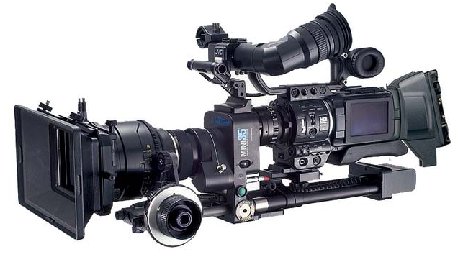Guest Post by Jade Waddy from Mutinee.com

There are many new and innovative technologies and video-sharing platforms which are changing the way films are made. Of these, digital filmmaking, YouTube and the use of smartphones to make films are perhaps the most important today.

Digital Filmmaking
The process of digital filmmaking has changed how every film is made, no matter how low or high end budget. Those considering entering the filmmaking sector will need to be able to utilise digital technology if they wish to succeed.
Digital filmmaking can either refer to the use of digital cameras, or the digital creation of characters or environments. Digital storage has replaced traditional film storage methods, thus significantly lowering the cost of storing films once created. In addition, whilst film degrades over time, digital films will last forever. Likewise, using digital cameras rather than film lowers the cost of film production, as film is expensive to buy. Although a digital camera is an expensive initial outlay, the overall cost of filming and post production is significantly reduced. Hence larger films can be made on smaller budgets, which is a significant development.
With digital filmmaking software, editing film and adding special effects is a simpler process. Audio and video digital files from several sources can be pieced together into one finished product. As a result, filmmakers are able to produce more sophisticated films at a smaller cost.

Smartphone Filmmaking
For the past three years, there has been a festival in Seoul, South Korea, designed to showcase the best smartphone films out there. The Olleh International Smartphone Film Festival this year had 700 entries from around the world, an increase of 75% on the previous year. Filmmakers with little capital to invest and only a smartphone to film on are able to create films, perfect for those wishing to break into the industry.
In March 2013, Chris Corbishley from the Imperial College Business School in London used a smartphone camera to demonstrate a new method of filmmaking. He and two other students made a short film called ‘In Limbo’, which was set in an airport lobby. The entire film was made on a smartphone and offered the viewer and interactive viewing experience. The audience could choose which of the characters they wanted to follow, by moving the phone to the right or to the left in order to engage with one of the five narratives which unfolded. Hence the viewers could watch the film from different angles and slowly piece together how all the characters ended up as they were. This is a revolutionary type of filmmaking which could quickly catch on, thanks to the ease by which a film can be made.
YouTube
YouTube has been in existence since 2005 and now has an audience of several billion viewers. As such, it is an increasingly importance factor in the success of independent films. Filmmakers can use YouTube to raise awareness of their film by posting teasers, trailers and short versions of feature length films, and can then generate worldwide audiences when they post their film online. Some argue that YouTube is still an underrated method of raising awareness about a particular film. With the right legwork, an audience of several million can be built up. From these millions there may well be a few hundred dedicated followers who will fund the next venture.
The emergence of social media in general has radically changed the way we think about filmmaking. Where once independent films would only be shown at film festivals, now anyone can upload a film to YouTube. Perhaps that’s why it’s so important to have a supportive community space online where films can be uploaded and shared for free with other users across the globe, thus gaining deserved recognition from an audience. Mutinee is a site which offers free film hosting and access to a global network of filmmakers, as well as exposure to film scouts who are abandoning the big films to search for the real talent in independent film.

